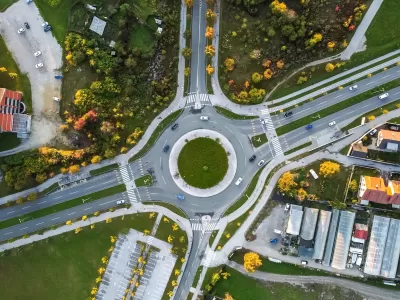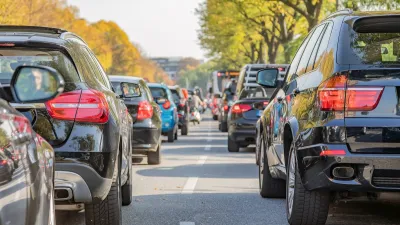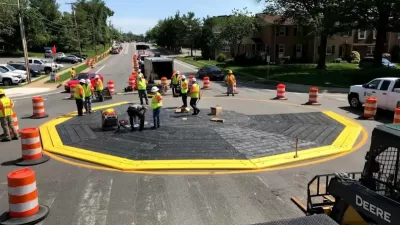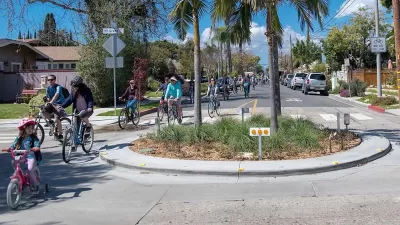What drives the U.S. backlash to roundabouts — objectively safer and more efficient than stop-and-go intersections?

Ah, the roundabout. A common sight in many global regions and a fearsome adversary for many American drivers.
But as the movement to install roundabouts and traffic circles — a type of intersection designed to keep traffic flowing, often without stoplights — John Surico wonders whether U.S. drivers can finally embrace the (incredibly efficient!) model. As Surico notes, “Nationwide, the US now has more than 10,000 roundabouts, a figure that’s doubled in a decade.”
In some U.S. communities where roundabouts have been installed, the backlash has been fierce. Yet “By just about all measures, the modern style of roundabout — where cars are meant to seamlessly yield in a circular pattern — are an easy win: They save lives, reduce traffic delays and cut emissions.”
Surico attributes the vitriolic opposition to roundabouts in part to a lack of familiarity and an image of roundabouts as only monstrous, multi-lane traffic circles. Cities that install more roundabouts at once tend to have more success as drivers learn to navigate them and become accustomed to them. In Carmel, Indiana, a bold experiment led by then-mayor Jim Brainard installed over 150 roundabouts across the city. Early opposition turned to strong support when residents began to notice the congestion relief and cost savings. The former mayor credits public outreach and education, which included informational TV spots and neighborhood meetings, with encouraging residents to understand and appreciate the benefits of roundabouts.
FULL STORY: Can American Drivers Learn to Love Roundabouts?

Study: Maui’s Plan to Convert Vacation Rentals to Long-Term Housing Could Cause Nearly $1 Billion Economic Loss
The plan would reduce visitor accommodation by 25,% resulting in 1,900 jobs lost.

Alabama: Trump Terminates Settlements for Black Communities Harmed By Raw Sewage
Trump deemed the landmark civil rights agreement “illegal DEI and environmental justice policy.”

North Texas Transit Leaders Tout Benefits of TOD for Growing Region
At a summit focused on transit-oriented development, policymakers discussed how North Texas’ expanded light rail system can serve as a tool for economic growth.

How Community Science Connects People, Parks, and Biodiversity
Community science engages people of all backgrounds in documenting local biodiversity, strengthening connections to nature, and contributing to global efforts like the City Nature Challenge to build a more inclusive and resilient future.

Alabama: Trump Terminates Settlements for Black Communities Harmed By Raw Sewage
Trump deemed the landmark civil rights agreement “illegal DEI and environmental justice policy.”

Dear Tesla Driver: “It’s not You, It’s Him.”
Amidst a booming bumper sticker industry, one writer offers solace to those asking, “Does this car make me look fascist?”
Urban Design for Planners 1: Software Tools
This six-course series explores essential urban design concepts using open source software and equips planners with the tools they need to participate fully in the urban design process.
Planning for Universal Design
Learn the tools for implementing Universal Design in planning regulations.
City of Santa Clarita
Ascent Environmental
Institute for Housing and Urban Development Studies (IHS)
City of Grandview
Harvard GSD Executive Education
Toledo-Lucas County Plan Commissions
Salt Lake City
NYU Wagner Graduate School of Public Service





























